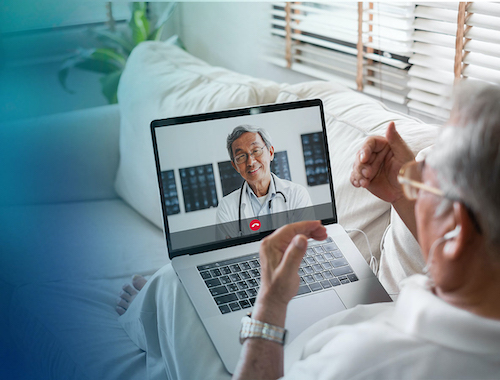SEPTEMBER 2, 2015
Ask Texas Health Care member Marc Dean, M.D. what the most rewarding aspect of practicing medicine is to him, he says, without hesitation, “solving problems.”
Dr. Dean is an Otolaryngologist, commonly known as an Ear, Nose, and Throat (ENT) specialist. Dr. Dean is continually looking for new ways to solve problems, leading him to embrace telemedicine, explore the use of robotics in surgical procedures, and launch his own research institute to explore technological advances in medicine. He is a leader in utilizing technology to provide access to health care – both in his practice located in Fort Worth’s Medical District, as well as in his humanitarian work that takes him to countries on the other side of the world.
Bridging distance with telemedicine
Dr. Dean is a strong proponent of telemedicine, which allows a physician to see a patient remotely, utilizing a secure web-based platform. He cites a recent Association of American Medical Colleges study which predicts by 2025, there will be a shortfall of up to 90,000 physicians in the United States – including up to 31,000 surgical specialists – as a proof point that remote technologies such as telemedicine are essential to delivering care to a growing population. Dr. Dean has recently started utilizing telemedicine in his Fort Worth ENT practice.
“If I am at the hospital for a surgery, but one of my patients has an emergency, technology now allows me to evaluate and treat that patient in my clinic on the same day,” he explains. For the patient, the experience is not particularly different than what it would be than if seeing the doctor in person. A patient will come to the physician’s office, check in, and be shown to an exam room. A nurse or medical assistant then conducts a physical exam using telemedicine-compatible diagnostic equipment
A webcam and television monitor allows the doctor to observe the patient and the patient to see and speak with the doctor. How can the doctor do an exam of the patient through a webcam? Newer exam instruments have the ability to transmit images in real time, so when the nurse uses an otoscope to look in the patient’s ears, the device transmits the image to the television monitor the physician is looking at, wherever he may be. Dr. Dean notes that the quality of the image is far superior to what he would see if he were with the patient in person, looking through the otoscope himself. “The high-definition images I can see in telemedicine give me a much better look at what’s going on with a patient than I would otherwise have,” Dr. Dean says.
Dr. Dean acknowledges that as with any new technology, there are hurdles and pitfalls. “You are unable to conduct a traditional physical exam of the patient, but there are other diagnostic modalities that provide the same or even more specific information,” he said. Dr. Dean points to ultrasound as a way to get a very good objective exam to evaluate the anatomy. The nurse or medical assistant provides a thorough exam in most cases, as well.
“Patients are way ahead of many physicians when it comes to telemedicine,” Dr. Dean says. He cites a survey that showed 67 percent of patients said they would be comfortable seeing their doctor via telemedicine, while less than a quarter of physicians reported they would be willing to see their patients remotely.
Dr. Dean notes that the concept of telemedicine is not new; it’s been around since 1968. The challenge in utilizing it on a broad scale has been the lack of access to cost-effective diagnostic tools and the secure technological infrastructure to support it; understandably.





